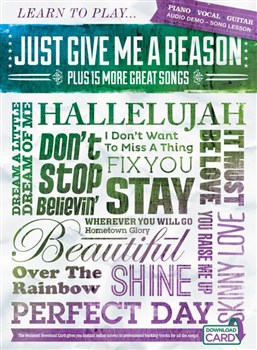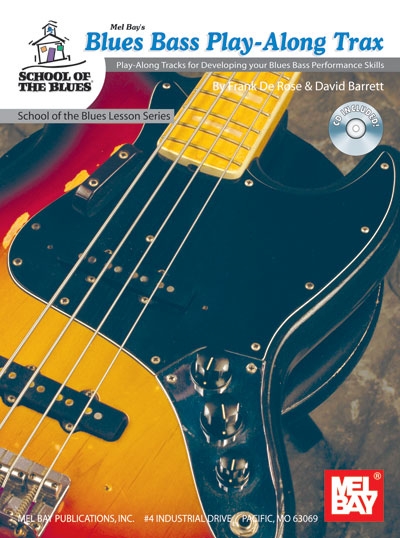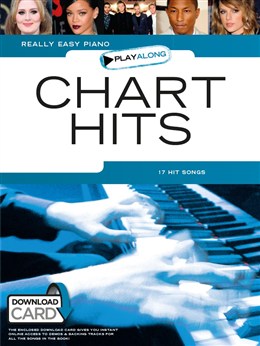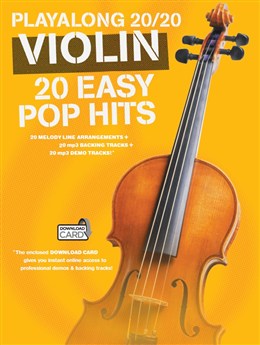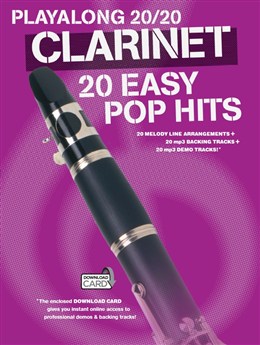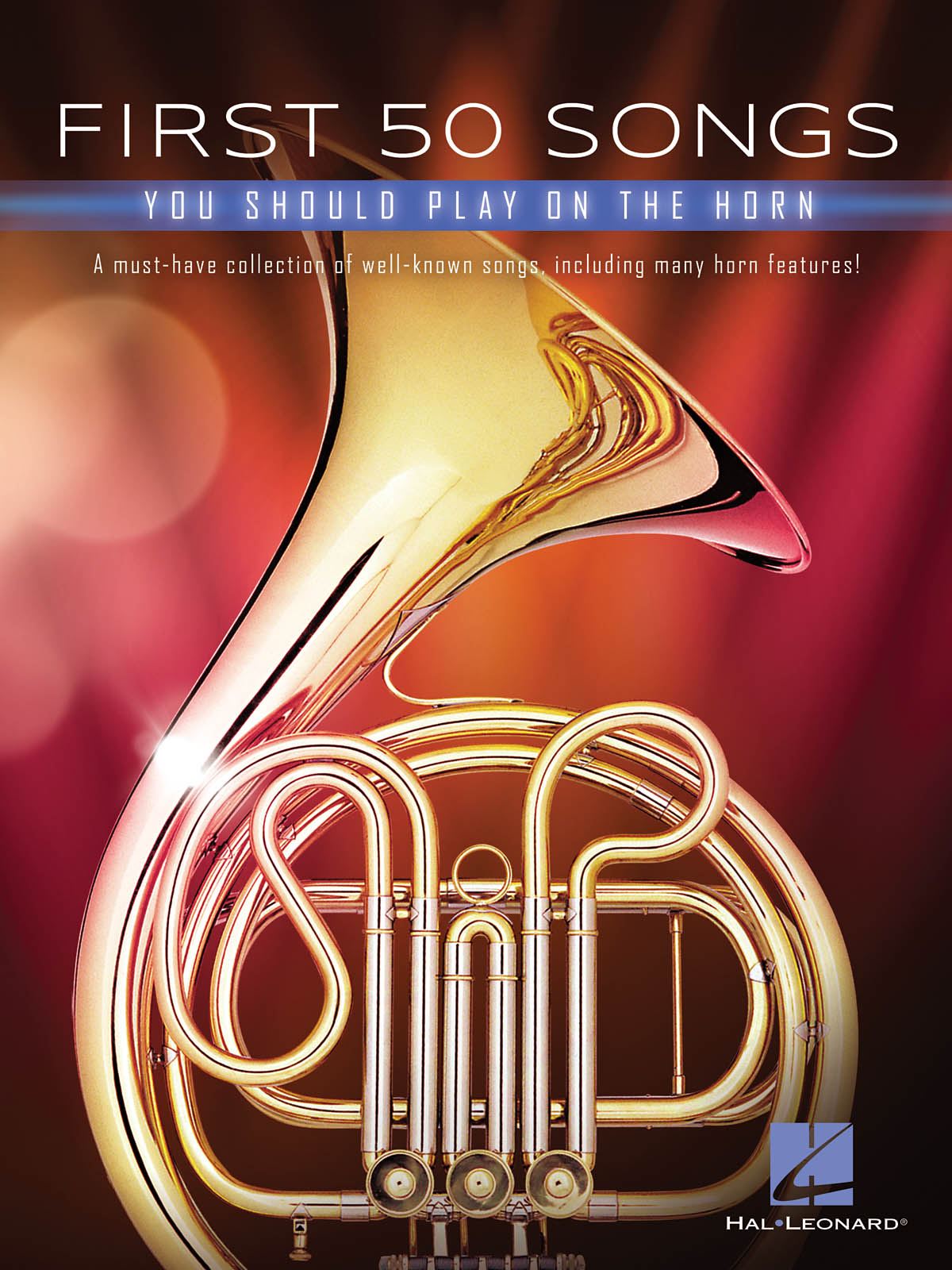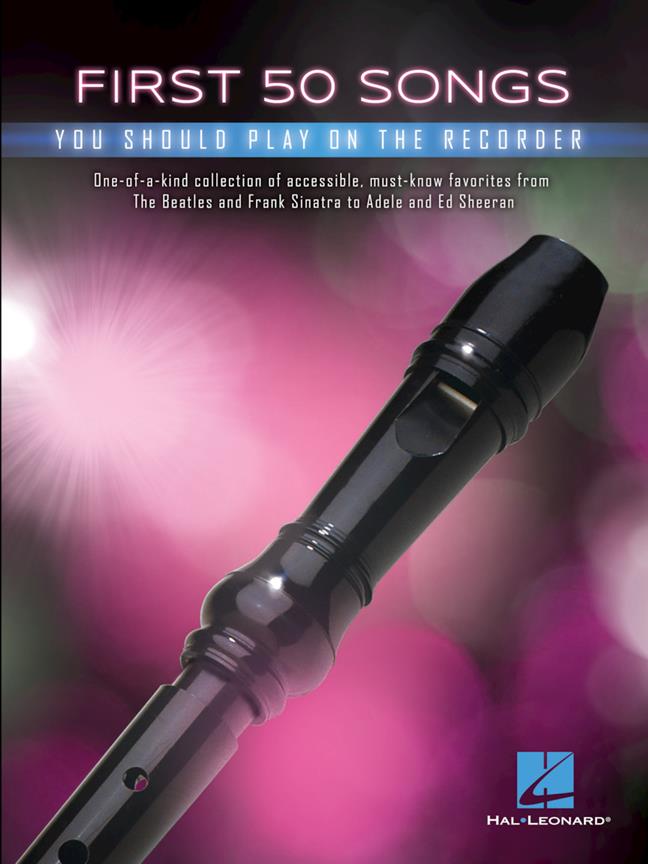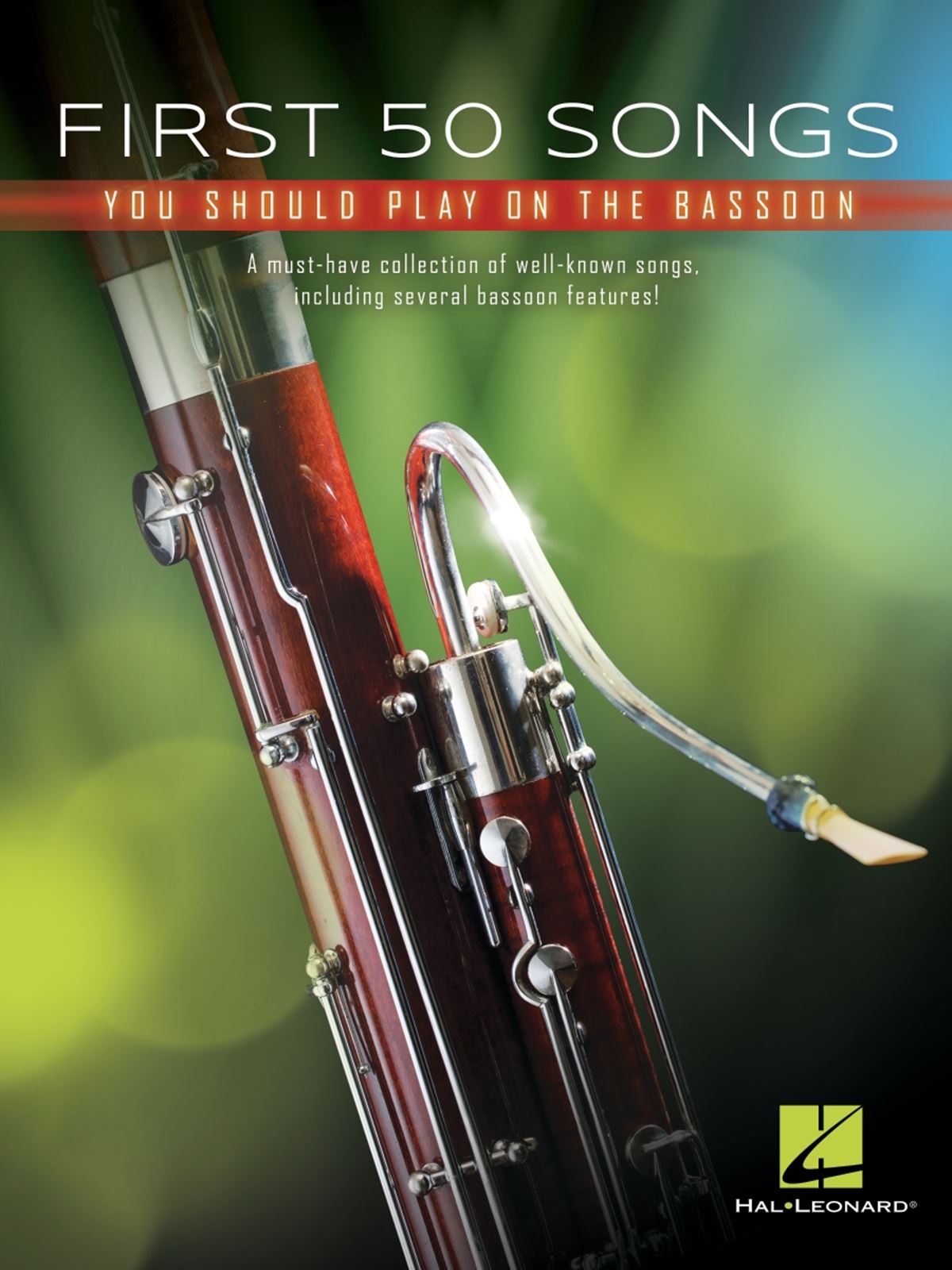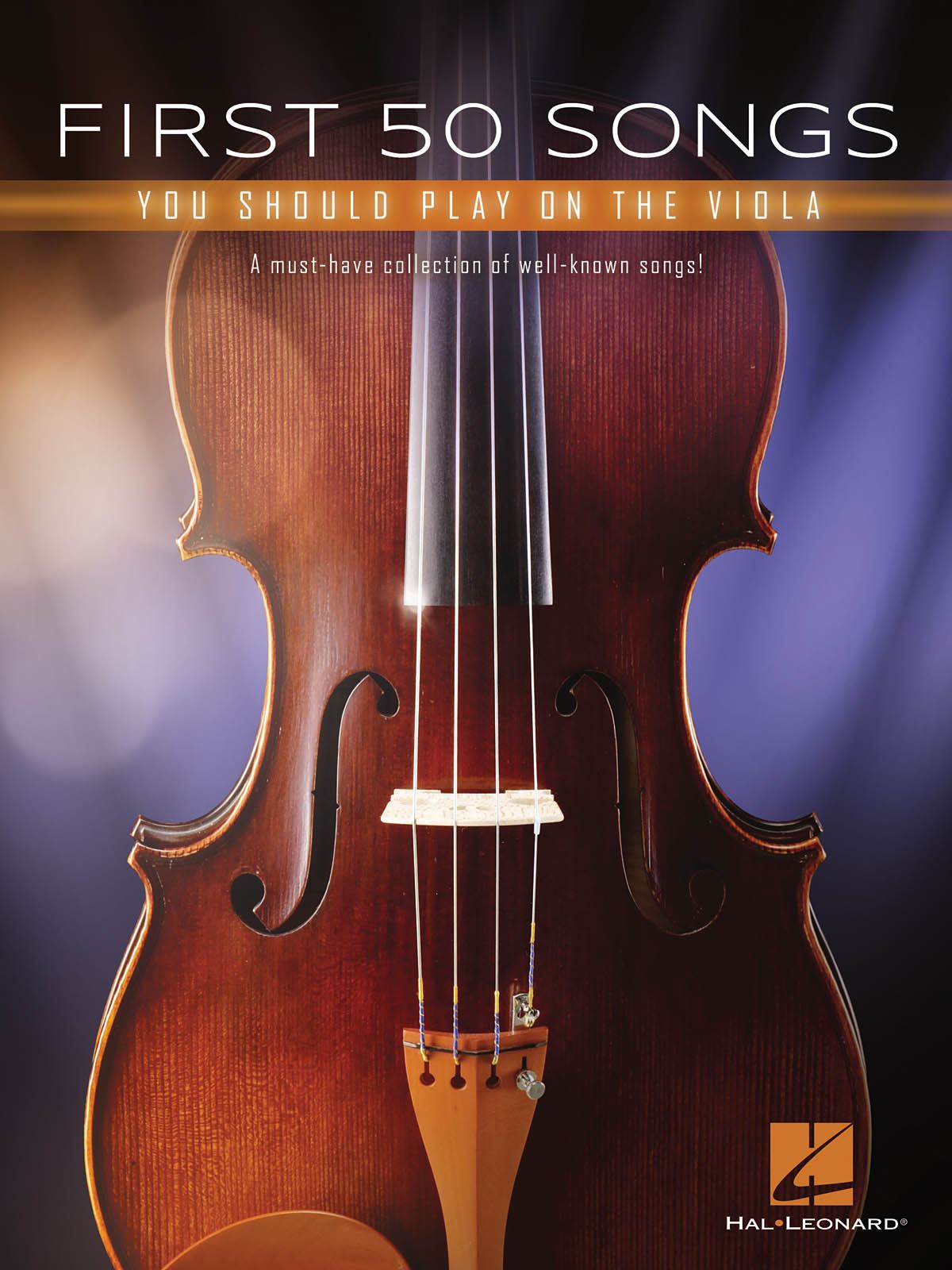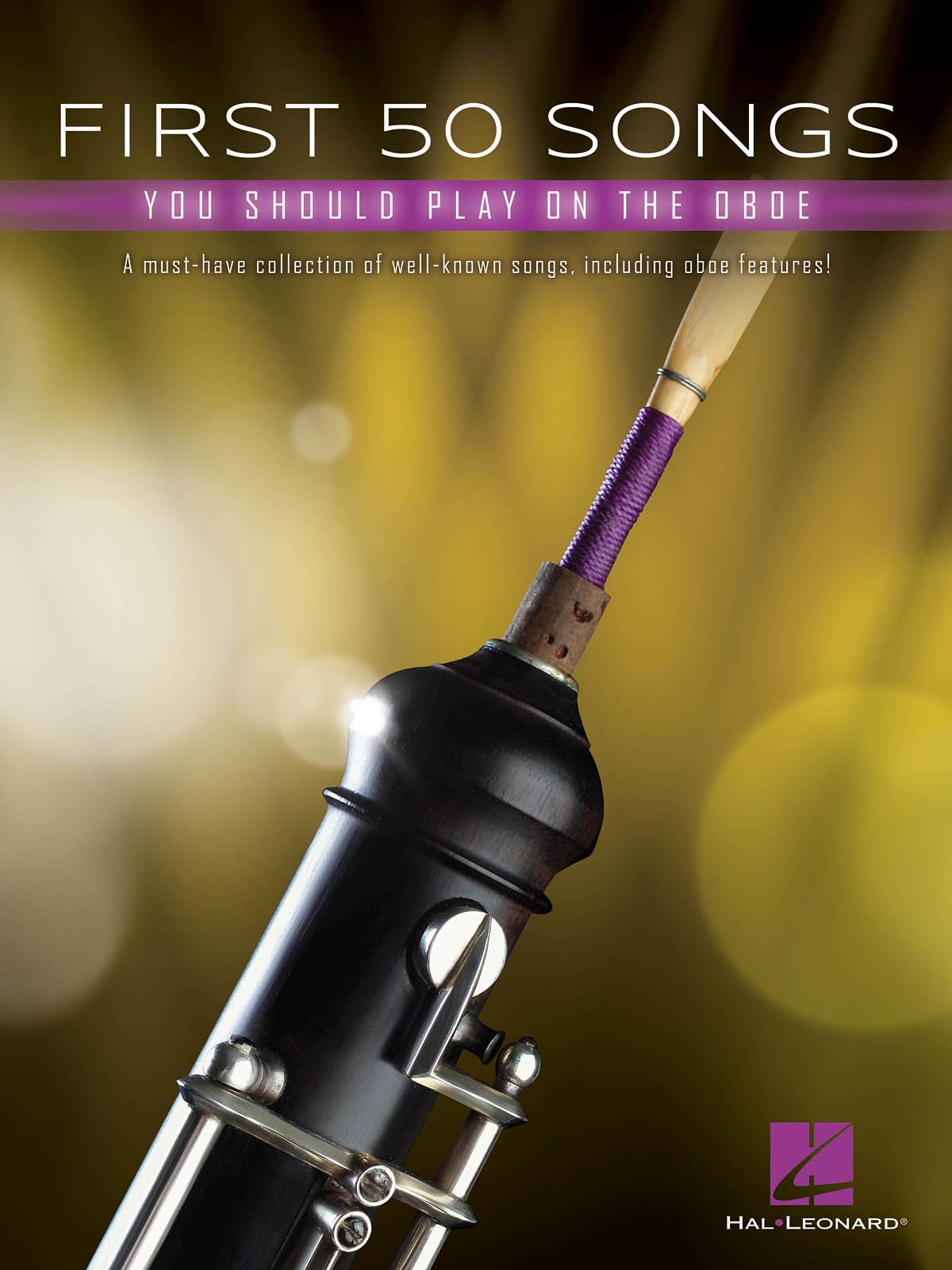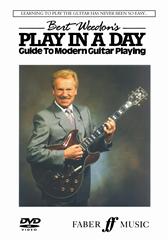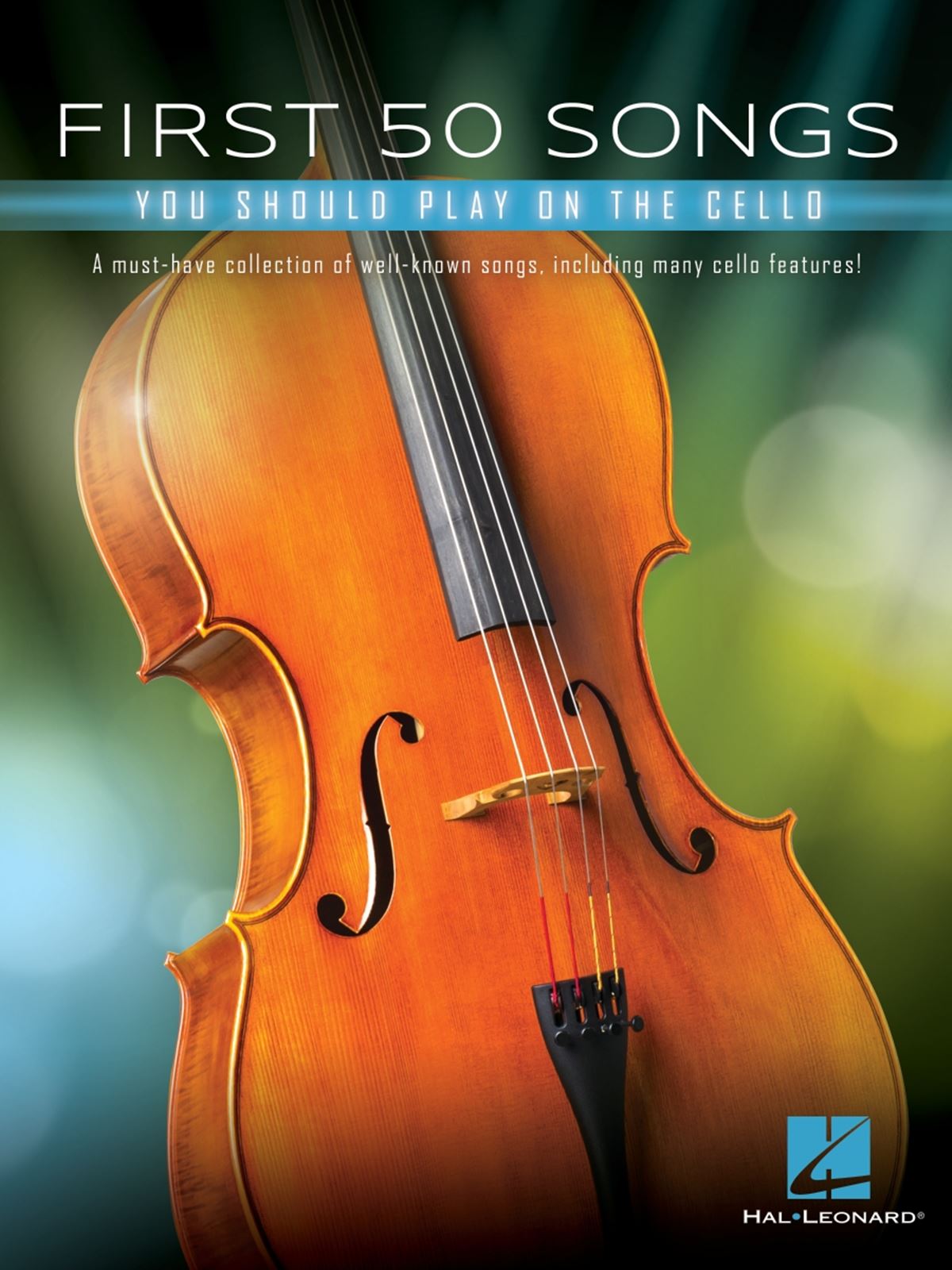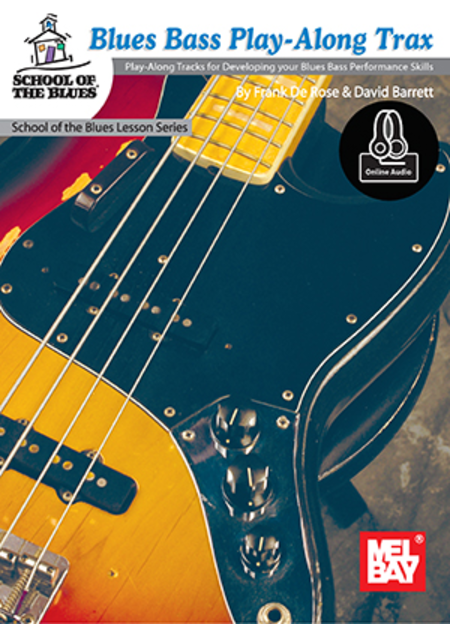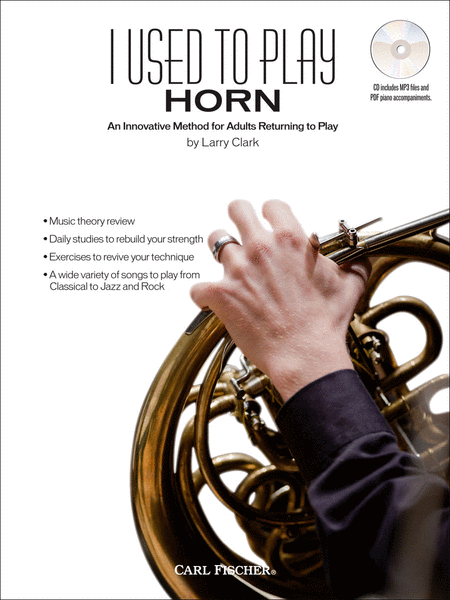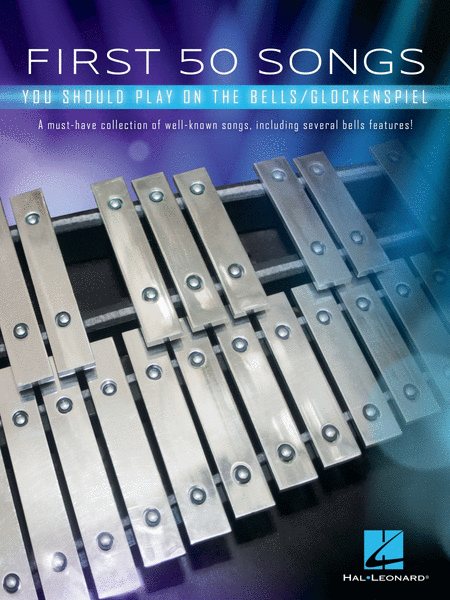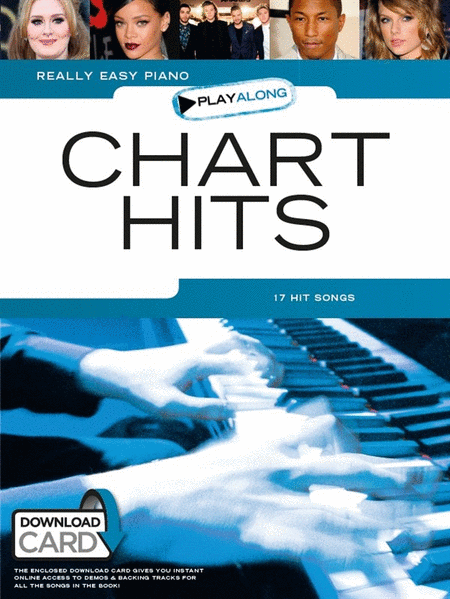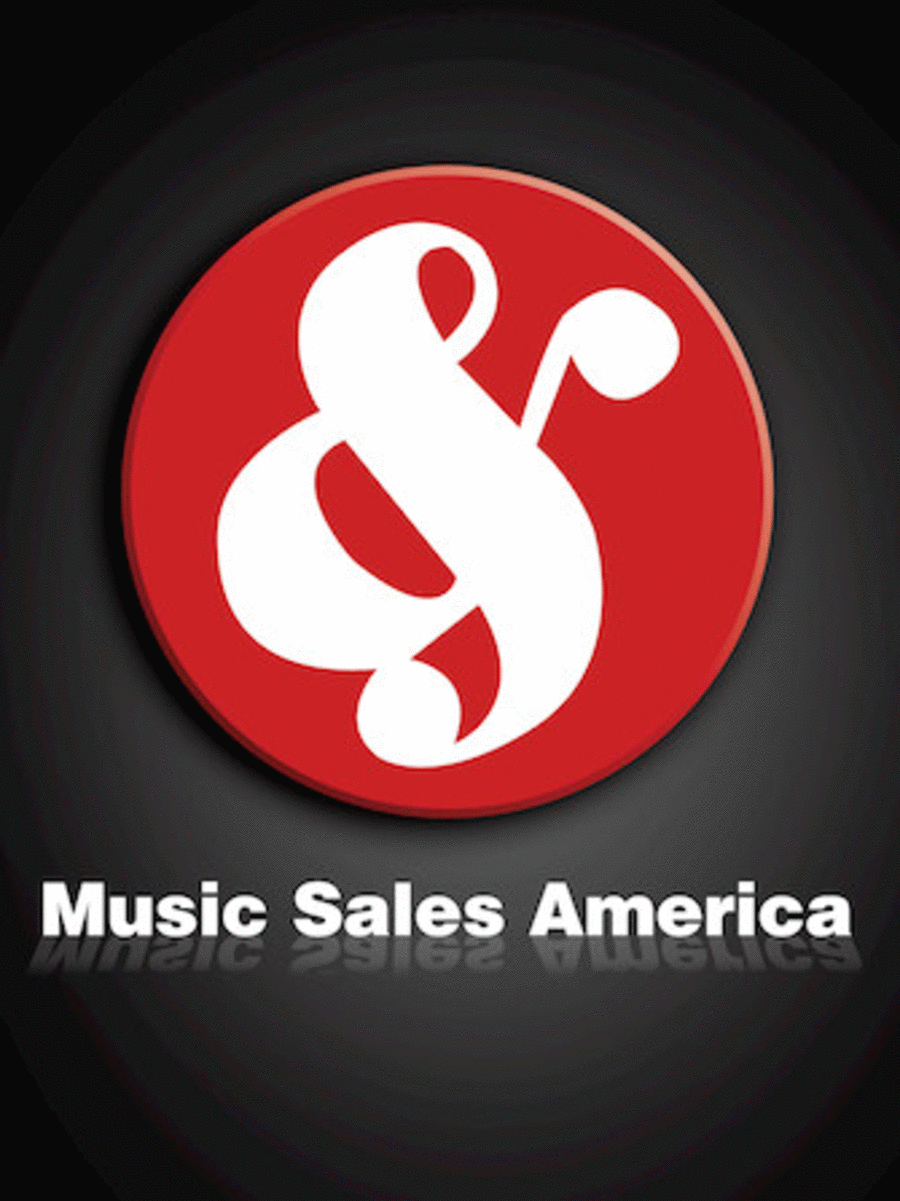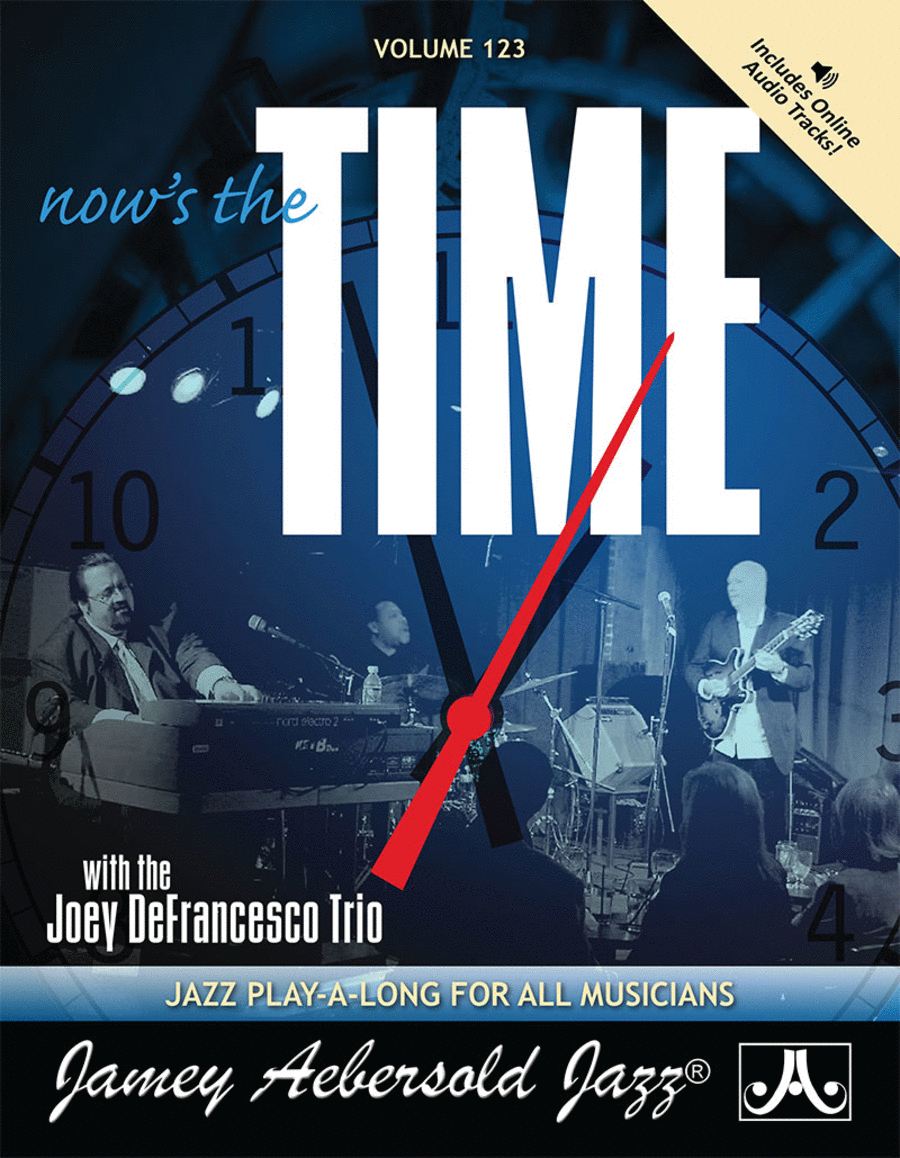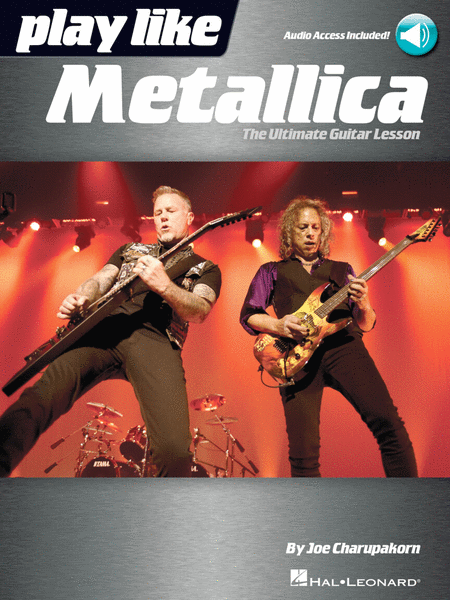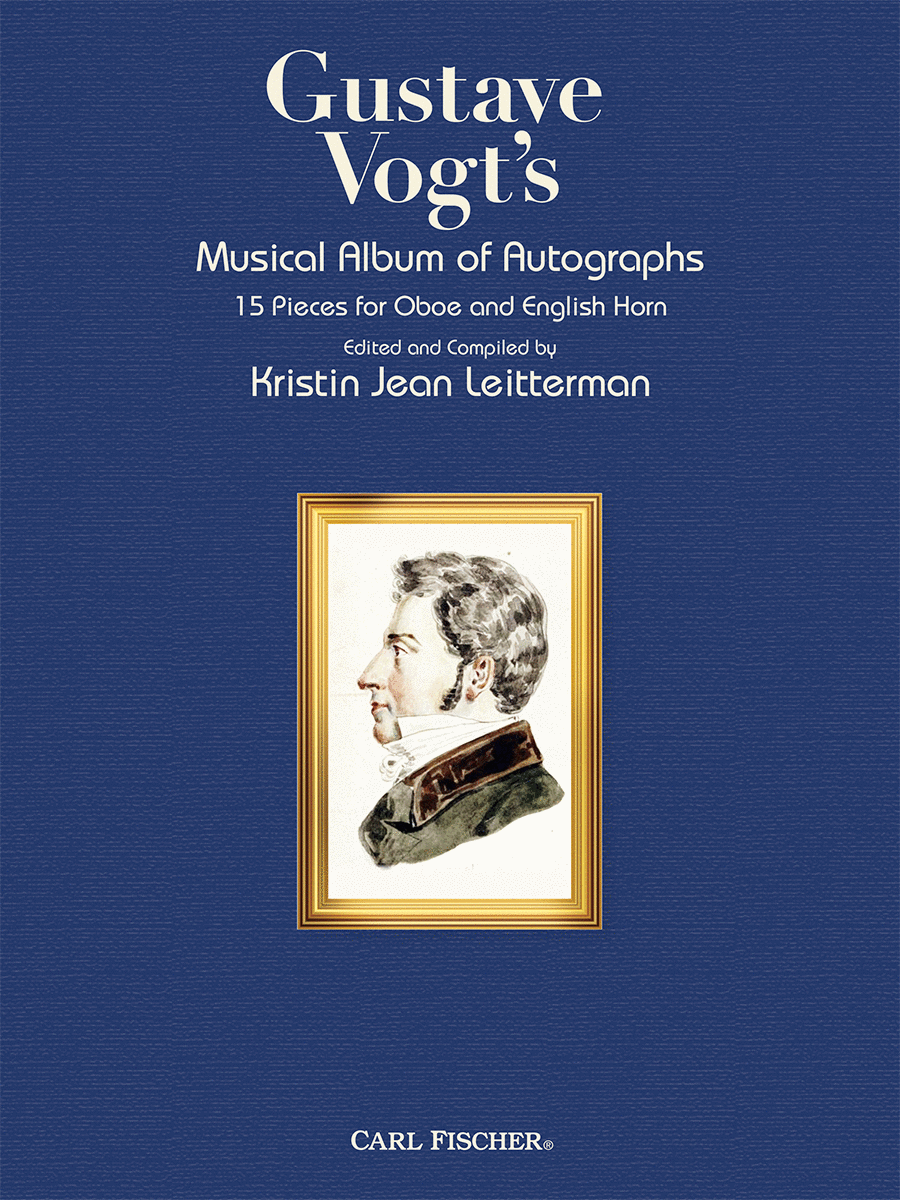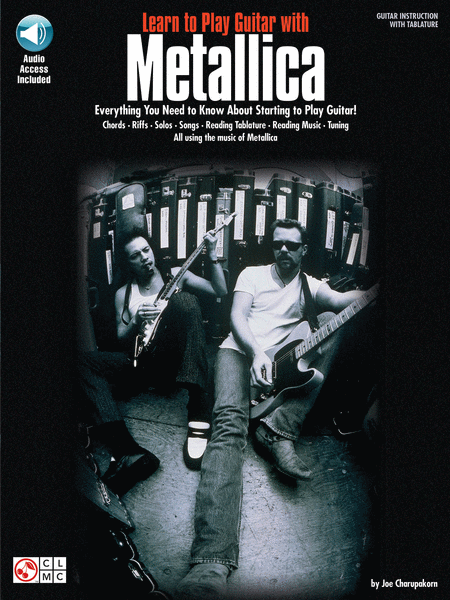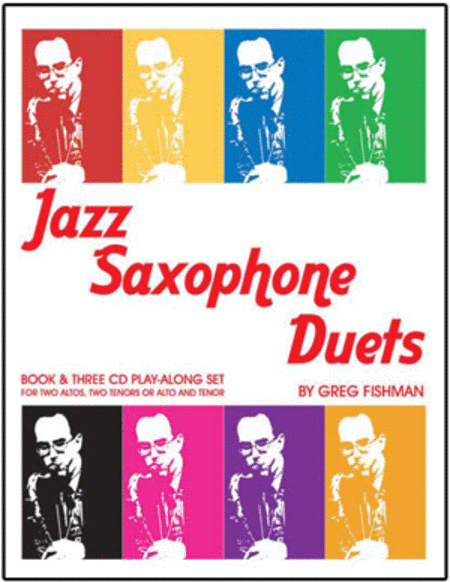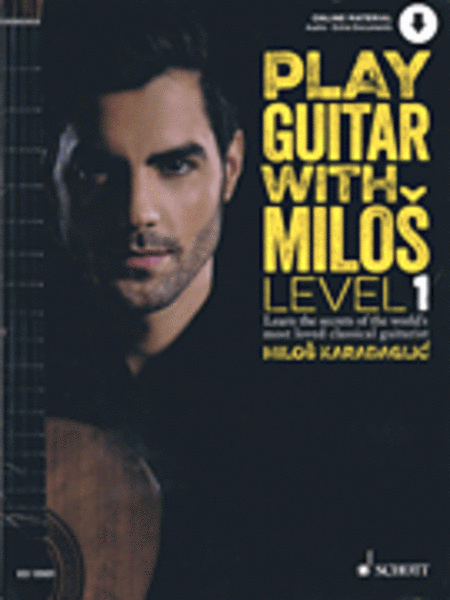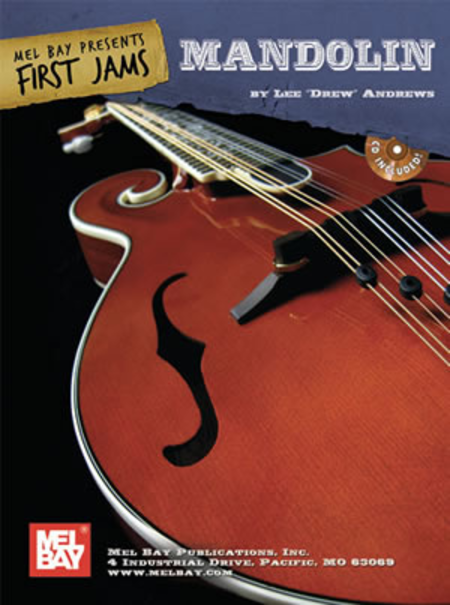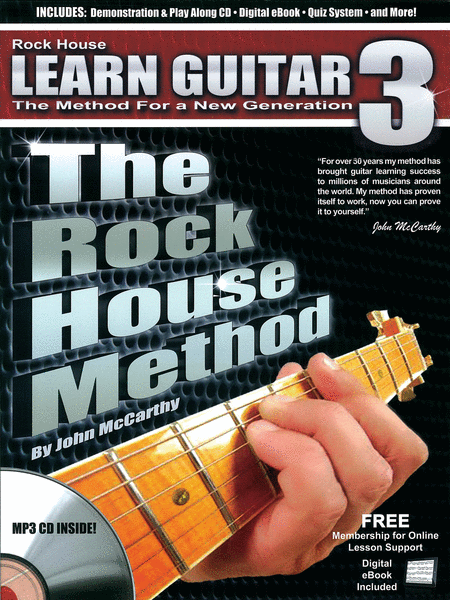|
| Learn To Play Just Give
Me A Reason Plus 15 More
Great Songs
Piano, Voix et Guitare [Partition + Accès audio]
Amsco Wise Publications
In this book and download card set, P!nk's mega hit Just Give Me A Reason and 15...(+)
In this book and download card set, P!nk's mega hit Just Give Me A Reason and 15 other popular songs are arranged for Piano, Voice and Guitar and explained in easy-to-follow mini-tutorials, with a difficulty rating between 1 and 5. You get full lyrics, music, playing tips and performance hints for every song. Best of all you get personal access to downloadable Piano demos so you can hear how your playing should sound. This is the brand new way to learn to sing and play the songs you love. / Piano/Vocal/Guitare (PVG)
Délais: 2-5 jours - En Stock Fournisseur | | |
| Blues Bass Play Along
Trax (ROSE FRANK DE)
Basse electrique [Partition + CD] - Débutant
Mel Bay
Play-Along Tracks For Developing Your Blues Bass Performnace Skill. Par ROSE FRA...(+)
Play-Along Tracks For Developing Your Blues Bass Performnace Skill. Par ROSE FRANK DE. Welcome to the School of the Blues Lesson Series! This book and recording were created to help give you context to all the music you worked so hard to learn. The recorded Play-Along Trax have no bass. This gives you the opportunity to work on your blues bass patterns. I have used several different keys and tempos throughout these Play-Along Trax. These Play-Along Trax give you a very realistic example of how you would play live with a band. Music examples are kept fairly simple to make sure this book is accessible to bass players just above the beginning level. For best understanding of these techniques refer to Mel Bay's Blues Bass, Level 1 (MB21063BCD). Lastly, all the references in this book are written for a right-handed four string electric bass. If you play a 5 string bass you just need to extend the examples to include your B string. If you play left-handed then you need to reverse any references to the left and right hands. We will use standard music notation along with bass tablature (TAB) for this book. / Niveau : Débutant / Blues - Play Along / Tablatures / Guitare Basse Tablatures
Délais: 2-5 jours - En Stock Fournisseur | | |
| Really Easy Piano Play
Along : Chart Hits - Book
- Download Card
Piano Facile [Partition + Accès audio] - Facile
Amsco Wise Publications
The Really Easy Piano Playalong series provides you with Easy Piano arrangements...(+)
The Really Easy Piano Playalong series provides you with Easy Piano arrangements of hit songs by the most popular artists of today, with a unique download card that gives you demonstration and playalong tracks for each tune. With this edition of the bestselling series, you can learn 17 Chart Hits then play along to professionally-recorded backing tracks.
Featuring many of the top tunes of today, Chart Hits includes simplified arrangements for solo Piano, so these massively famous songs can be played by all abilities. With songs like Best Song Ever by One Direction, Happy by Pharrell Williams, Roar by Katy Perry and Ed Sheeran's Thinking Out Loud, these pop chart-toppers will impress anyone and everyone when played on the Piano. Each tune is arranged for Easy Piano, meaning the chords and tune can be picked up by beginners to the Piano, letting them play famous songs quickly and easily.
Using the accompanying download card, you can get instant online access to demonstration and backing tracks of each song, letting you first hear how it's meant to be played, then learn the song using the sheet music, and finally play along to a professionally-recorded backing track, ensuring you sound great and just like the original! Also included in this Really Easy Piano Playalong sheet music songbook is some very helpful and useful fingering tips, as well as lyrics, fascinating background information and invaluable performance hints, all contributing to make this a really great way for beginning pianists to learn all the best tunes of today.
With songs by Miley Cyrus, Passenger, Coldplay, Adele, Taylor Swift and Rihanna, Really Easy Piano Playalong presents a great number of today's bestselling, radio-conquering Chart Hits along with some demonstrations and backing tracks that will enable beginning pianists to play 17 brilliant pop songs with ease. / Niveau : Facile / Recueil / Piano
Délais: 2-5 jours - En Stock Fournisseur | | |
| Play Along 20/20 : 20
Easy Pop Hits - Book -
Audio Download
Violon [Partition + Accès audio] - Facile
Amsco Wise Publications
With the Playalong 20/20 Violin sheet music songbook, you get an incomparable co...(+)
With the Playalong 20/20 Violin sheet music songbook, you get an incomparable collection of 20 of the best pop songs topping the charts of today, as well as demonstrations and backing tracks for each song for you to download. All 20 tunes are expertly arranged in melody line format for the Violin.Featuring some of the best pop hits from the current charts, this pop sheet music selection makes these catchy and upbeat songs accessible for the Violin. Including tunes like 22 by Taylor Swift, Right Place Right Time by Olly Murs and One Direction\'s What Makes You Beautiful, this book proves that the Violin is not just for classical music, but can also be a brilliant way to get a unique sound out of popular music. The Playalong 20/20 Violin book will help violinists of all ages and abilities play some truly perfect pop songs.Not only are there many uptempo and fun pop songs included in this collection, but you\'ll also get the slower ballads whose melodies will will sound just as beautiful on the Violin. Tunes like Frozen\'s Let It Go, Adele\'s wonderful Someone Like You, Wrecking Ball by Miley Cyrus as well as John Legend\'s huge heartfelt song All Of Me. Whether you\'re a pop-loving violinist or you\'re just looking to reinvigorate and freshen up your repertoire, Playalong 20/20 Violin sheet music is the collection for you. Not only do you get these 20 pieces of pop Violin sheet music, you\'ll also receive an enclosed download card, giving you instant online access to demonstration and backing tracks of every single song. Using the demonstration tracks, with Violin played by Alexandra Wood, you can hear exactly how songs like Jar Of Hearts and Make You Feel My Love should sound. Then, using the backing tracks, you can take the lead role, playing such gloriously poppy melodies over professionally-recorded backing tracks, ensuring that, during any performance or practice, you sound great.If you\'re looking to reinvigorate your repertoire with some pure pop perfection, why not check out the Playalong 20/20 Violin songbook, and start learning these fantastically fun tunes for the Violin. Use the accompanying download card to hear help you learn each song, then put on your very own performance with the backing tracks. / Violon
Délais: En Stock | | |
| Play Along 20/20 : 20
Easy Pop Hits - Book -
Audio Download
Clarinette [Partition + Accès audio] - Facile
Amsco Wise Publications
With the Playalong 20/20 Clarinet sheet music songbook, you get an incomparable ...(+)
With the Playalong 20/20 Clarinet sheet music songbook, you get an incomparable collection of 20 of the best pop songs topping the charts of today, as well as demonstrations and backing tracks for each song for you to download. All 20 tunes are fantastically arranged in melody line format for the Clarinet.Featuring some of the best pop hits from the current charts, this pop sheet music selection makes these catchy and upbeat songs accessible for the Clarinet. Including tunes like 22 by Taylor Swift, Right Place Right Time by Olly Murs and One Direction's What Makes You Beautiful, this book proves that the Clarinet is not just for classical music, but can also be a brilliant way to get a unique sound out of popular music. The Playalong 20/20 Clarinet book will help clarinettists of all ages and abilities play some truly perfect pop songs.Not only are there many uptempo and fun pop songs included in this collection, but you'll also get the slower ballads whose melodies will will sound just as beautiful on the Clarinet. Tunes like Frozen's Let It Go, Adele's wonderful Someone Like You, Wrecking Ball by Miley Cyrus as well as John Legend's huge heartfelt song All Of Me. Whether you're a pop-loving clarinettist or you're just looking to reinvigorate and freshen up your repertoire, Playalong 20/20 Clarinet sheet music is the collection for you. Not only do you get these 20 pieces of pop Clarinet sheet music, you'll also receive an enclosed download card, giving you instant online access to demonstration and backing tracks of every single song. Using the demonstration tracks, with Clarinet played by Howard McGill, you can hear exactly how songs like Jar Of Hearts and Make You Feel My Love should sound. Then, using the backing tracks, you can take the lead role, playing such gloriously poppy melodies over professionally-recorded backing tracks, ensuring that, during any performance or practice, you sound great. Also included is a really useful Clarinet fingering chart, ensuring you never miss a note for any of these brilliant songs.If you're looking to reinvigorate your repertoire with some pure pop perfection, why not check out the Playalong 20/20 Clarinet songbook, and start learning these fantastically fun tunes for the Clarinet. Use the accompanying download card to hear help you learn each song, then put on your very own performance with the backing tracks. / Clarinette
Délais: 2-5 jours - En Stock Fournisseur | | |
| Play Along 20/20 : 20
Easy Pop Hits - Book -
Download Card
Flûte à Bec [Partition + Accès audio] - Facile
Amsco Wise Publications
With the Playalong 20/20 Recorder sheet music songbook, you get an incomparable ...(+)
With the Playalong 20/20 Recorder sheet music songbook, you get an incomparable collection of 20 of the best pop songs topping the charts of today, as well as demonstrations and backing tracks for each song for you to download. All 20 tunes are beautifully arranged in melody line format for the Recorder.Featuring some of the best pop hits from the current charts, this pop sheet music selection makes these catchy and upbeat songs accessible for the Recorder. Including tunes like 22 by Taylor Swift, Right Place Right Time by Olly Murs and One Direction's What Makes You Beautiful, this book proves that the Recorder is not just for classical music, but can also be a brilliant way to get a unique sound out of popular music. The Playalong 20/20 Recorder book will help recordists of all ages and abilities play some truly perfect pop songs.Not only are there many uptempo and fun pop songs included in this collection, but you'll also get the slower ballads whose melodies will will sound just as beautiful on the Recorder. Tunes like Frozen's Let It Go, Adele's wonderful Someone Like You, Wrecking Ball by Miley Cyrus as well as John Legend's huge heartfelt song All Of Me. Whether you're a pop-loving recordist or you're just looking to reinvigorate and freshen up your repertoire, Playalong 20/20 Recorder sheet music is the collection for you. Not only do you get these 20 pieces of pop Recorder sheet music, you'll also receive an enclosed download card, giving you instant online access to demonstration and backing tracks of every single song. Using the demonstration tracks, with Recorder played by Louise Bradbury, you can hear exactly how songs like Jar Of Hearts and Make You Feel My Love should sound. Then, using the backing tracks, you can take the lead role, playing such gloriously poppy melodies over professionally-recorded backing tracks, ensuring that, during any performance or practice, you sound great. Also included is a really useful Recorder fingering chart, ensuring you never miss a note for any of these brilliant songs.If you're looking to reinvigorate your repertoire with some pure pop perfection, why not check out the Playalong 20/20 Recorder songbook, and start learning these fantastically fun tunes for the Recorder. Use the accompanying download card to hear help you learn each song, then put on your very own performance with the backing tracks. / Flûte A Bec
Délais: 2-5 jours - En Stock Fournisseur | | |
| Play Along 20/20 : 20
Easy Pop Hits - Book -
Audio Download
Flûte traversière [Partition + Accès audio]
Amsco Wise Publications
With the Playalong 20/20 Flute sheet music songbook, you get an incomparable col...(+)
With the Playalong 20/20 Flute sheet music songbook, you get an incomparable collection of 20 of the best pop songs topping the charts of today, as well as demonstrations and backing tracks for each song for you to download. All 20 tunes are fantastically arranged in melody line format for the Flute.Featuring some of the best pop hits from the current charts, this pop sheet music selection makes these catchy and upbeat songs accessible for the Flute. Including tunes like 22 by Taylor Swift, Right Place Right Time by Olly Murs and One Direction's What Makes You Beautiful, this book proves that the Flute is not just for classical music, but can also be a brilliant way to get a unique sound out of popular music. The Playalong 20/20 Flute book will help flautists of all ages and abilities play some truly perfect pop songs.Not only are there many uptempo and fun pop songs included in this collection, but you'll also get the slower ballads whose melodies will will sound just as beautiful on the Flute. Tunes like Frozen's Let It Go, Adele's wonderful Someone Like You, Wrecking Ball by Miley Cyrus as well as John Legend's huge heartfelt song All Of Me. Whether you're a pop-loving flautist or you're just looking to reinvigorate and freshen up your repertoire, Playalong 20/20 Flute sheet music is the collection for you. Not only do you get these 20 pieces of pop Flute sheet music, you'll also receive an enclosed download card, giving you instant online access to demonstration and backing tracks of every single song. Using the demonstration tracks, with Flute played by Howard McGill, you can hear exactly how songs like Jar Of Hearts and Make You Feel My Love should sound. Then, using the backing tracks, you can take the lead role, playing such gloriously poppy melodies over professionally-recorded backing tracks, ensuring that, during any performance or practice, you sound great. Also included is a really useful Flute fingering chart, ensuring you never miss a note for any of these brilliant songs.If you're looking to reinvigorate your repertoire with some pure pop perfection, why not check out the Playalong 20/20 Flute songbook, and start learning these fantastically fun tunes for the Flute. Use the accompanying download card to hear help you learn each song, then put on your very own performance with the backing tracks. / Flûte
Délais: 2-5 jours - En Stock Fournisseur | | |
| First 50 Songs You Should
Play On The Horn
Cor
Hal Leonard
A Must-Have Collection of Well-Known Songs, Including Many Horn Features!. If yo...(+)
A Must-Have Collection of Well-Known Songs, Including Many Horn Features!. If you've been taking horn lessons for a little while, you're probably eager to put your new skills to use and learn to play some familiar songs. The First 50 Songs You Should Play on the Horn includes a wide variety of favorite songs, from pop hits and movie themes to classical melodies and folk songs. Titles include: All of Me · All You Need Is Love · Fight Song · God Bless America® · The Godfather (Love Theme) · Hallelujah · Hello · I Will Always Love You · I'm Yours · Just Give Me a Reason · Just the Way You Are · Let It Go · My Heart Will Go On (Love Theme from 'Titanic') · Pure Imagination · Raiders March · Roar · Rolling in the Deep · Satin Doll · Shake It Off · Stand by Me· The Star-Spangled Banner · This Is Me · Uptown Funk · and more. / Pop and rock / Date parution : 2020-04-11/ Recueil / Cor
Délais: En Stock | | |
| First 50 Songs You Should
Play on Recorder
Flûte à Bec [Partition]
Hal Leonard
If you've been learning how to play recorder for a little while, you are probabl...(+)
If you've been learning how to play recorder for a little while, you are probably eager to learn some familiar songs. This book includes a wide variety of favorite songs, from pop hits and movie themes to classical melodies and folk songs. Includes: All You Need Is Love (The Beatles) · Believer (Imagine Dragons) · Carnival of Venice · Evermore (from Beauty and the Beast) · Fly Me to the Moon (In Other Words) (Frank Sinatra) · God Bless America® (Irving Berlin) · Hello (Adele) · I Will Always Love You (Whitney Houston) · Just Give Me a Reason (Pink) · Let It Go (from Frozen)· Moon River (Henry Mancini) · Perfect (Ed Sheeran) · Roar (Katy Perry) · Shake It Off (Taylor Swift) · Uptown Funk (Bruno Mars) · and more./ Recueil / Flûte à Bec
Délais: En Stock | | |
| First 50 Songs You Should
Play On Bassoon
Basson
Hal Leonard
A Must-Have Collection of Well-Known Songs, Including Several Bassoon Features!....(+)
A Must-Have Collection of Well-Known Songs, Including Several Bassoon Features!. If you've been taking bassoon lessons for a while, you're probably eager to learn some familiar songs. The First 50 Songs You Should Play on the Bassoon includes a wide variety of favorite songs, from pop hits and movie themes to folk songs and classical melodies, several of which originally featured bassoon! Songs include: All of Me · All You Need Is Love · Fight Song · The Fool on the Hill · God Bless America® · The Godfather (Love Theme) · Hallelujah · Happy · Hello · Hey Jude · I Will Always Love You · In the Hall of the Mountain King · Theme from Jaws · Just Give Me a Reason · Let It Go · Livin' on a Prayer · The Pink Panther · Pure Imagination · Roar · Rolling in the Deep ·Satin Doll · Shake It Off · The Sorcerer's Apprentice · Stand by Me · Stay with Me · This Is Me · What a Wonderful World · and more. / Pop and rock / Date parution : 2020-04-11/ Recueil / Basson
Délais: En Stock | | |
| First 50 Songs You Should
Play On The Viola
Alto seul
Hal Leonard
A Must-Have Collection of Well-Known Songs!. If you've been taking viola lessons...(+)
A Must-Have Collection of Well-Known Songs!. If you've been taking viola lessons for a little while, you're probably eager to put your new skills to use and learn to play some familiar songs. The First 50 Songs You Should Play on the Viola includes a wide variety of favorite songs, from pop hits and movie themes to classical melodies and folk songs. / Pop and rock / Date parution : 2020-04-11/ Recueil / Alto
Délais: En Stock | | |
| First 50 Songs You Should
Play On Oboe
Hautbois
Hal Leonard
A Must-Have Collection of Well-Known Songs, Including Oboe Features!. If you've ...(+)
A Must-Have Collection of Well-Known Songs, Including Oboe Features!. If you've been taking oboe lessons for a little while, you are probably eager to learn some familiar songs. The First 50 Songs You Should Play on Oboe includes a wide variety of favorites, from pop hits and movie themes to classical melodies and folk songs, many of which originally featured oboe! / Pop and rock / Date parution : 2020-04-11/ Recueil / Hautbois
Délais: En Stock | | |
| Bert Weedon's Play
In A Day Dvd (WEEDON
BERT)
Guitare [DVD]
Faber Music Limited
Play In A Day. Par WEEDON BERT. In this remarkable DVD the world-renowned master...(+)
Play In A Day. Par WEEDON BERT. In this remarkable DVD the world-renowned master guitarist unlocks the secrets of the guitar. Highly regarded for his versatility, Bert's glittering career (including being voted Britain's top guitarist nine times!) has been a strong influence on virtually every famous name linked with the instrument.
Play in a Day means just that. After just the first 25 minutes video tuition a complete beginner with nay six string guitar will be able to join in with Bert Weedon and his group and play their first tune. Each selection ends with you playing one of fifteen tunes of varying styles and rhythms, with Bert and his group.
Previously only available in VHS format, the video has now been reworked into DVD format and is not restricted by territory allowing it to be viewed in any country. Bert Weedon's expert tuition and straightforward advice will not only help you learn basic skills but also give you the confidence and encouragement to go on to more advanced guitar playing.
/ Accessoire / Guitare
Délais: 2-5 jours - En Stock Fournisseur | | |
| First 50 Songs You Should
Play On Cello
Violoncelle
Hal Leonard
A Must-Have Collection of Well-Known Songs, Including Many Cello Features. If yo...(+)
A Must-Have Collection of Well-Known Songs, Including Many Cello Features. If you've been learning to play the cello for a little while, you're probably eager to put those new skills to work and play some familiar songs. The First 50 Songs You Should Play on the Cello includes a wide variety of favorite songs, from pop hits and movie themes, to folk songs and classical melodies, several of which originally featured cello! / Pop and rock / Recueil / Violoncelle
Délais: En Stock | |
|
|
|
| Blues Bass Play-Along Trax
Basse electrique [Partition + Accès audio] - Facile
Mel Bay
Play-Along Tracks for Developing your Blues Bass Performance Skill. Compo...(+)
Play-Along Tracks for
Developing your Blues
Bass Performance
Skill. Composed by
Frank De Rose and David
Barrett. School of Blues.
Book and online audio.
Published by Mel Bay
Publications, Inc
(MB.21064M).
$14.99 - Voir plus => AcheterDélais: 1 to 2 weeks | | | |
| I Used to Play Horn
Cor
Carl Fischer
(An Innovative Method for Adults Returning to Play). Arranged by Larry Clark. Fo...(+)
(An Innovative Method for
Adults Returning to
Play). Arranged by Larry
Clark. For french horn.
Method book. Published by
Carl Fischer
$21.99 - Voir plus => AcheterDélais: 1 to 2 weeks | | | |
| First 50 Songs You Should Play on the Bells/Glockenspiel
Hal Leonard
Bells; Glockenspiel SKU: HL.322944 A Must-Have Collection of Well-Know...(+)
Bells; Glockenspiel
SKU: HL.322944
A Must-Have Collection
of Well-Known Songs,
Including Several Bells
Features!. Composed
by Various. Instrumental
Folio. Pop, Standards.
Softcover. 64 pages.
Published by Hal Leonard
(HL.322944). ISBN
9781540070111. UPC:
888680977009.
9.0x12.0x0.165
inches. If you've
been taking Glockenspiel
lessons for a while,
you're probably eager to
learn some familiar
songs. The First 50 Songs
You Should Play on the
Bells/Glockenspiel
includes a wide variety
of favorite songs, from
pop hits and movie themes
to folk songs and
classical melodies,
several of which
originally featured
bells! Songs include: All
of Me • All You
Need Is Love •
Canon in D •
Carnival of Venice
• Fight Song
• The Fool on the
Hill • God Bless
America® • The
Godfather (Love Theme)
• Hallelujah
• Happy •
Hello • I Will
Always Love You •
Just Give Me a Reason
• Let It Go •
Pure Imagination •
Roar • Rolling in
the Deep • Satin
Doll • Shake It Off
• Shallow •
Stand by Me • Stay
with Me • This Is
Me • Ukranian Bell
Carol • What a
Wonderful World •
and more.
About First
50 You've
been taking lessons,
you've got a few chords
under your belt, and
you're ready to buy a
songbook. Now what? Hal
Leonard has the answers
in its First 50 series.
The First 50 series
steers new players in the
right direction. These
books contain easy to
intermediate arrangements
for must-know songs. Each
arrangement is simple and
streamlined, yet still
captures the essence of
the tune. $12.99 - Voir plus => AcheterDélais: 24 hours - In Stock | | | |
| Really Easy Piano Playalong: Chart Hits
Piano Facile [Partition + Accès audio]
Amsco Wise Publications
Easy Piano SKU: BT.MUSAM1010647 Really Easy Piano. Pop and Rock. Book wit...(+)
Easy Piano SKU:
BT.MUSAM1010647
Really Easy Piano. Pop
and Rock. Book with
Online Audio. Composed
2015. 48 pages. Wise
Publications
#MUSAM1010647. Published
by Wise Publications
(BT.MUSAM1010647).
ISBN 9781783059812.
English. The Really
Easy Piano Playalong
series provides you with
Easy Piano arrangements
of hit songs by the most
popular artists of today,
with online audio that
gives you demonstration
and playalong tracks for
each tune. With this
edition of the
bestselling series, you
can learn 17 Chart Hits
then play along to
professionally-recorded
backing tracks. Featuring
many of the top tunes of
today, Chart Hits
 includes simplified
arrangements for solo
Piano, so these massively
famous songs can be
played by all abilities.
With songs like Best Song
Ever by One Direction,
Happy by Pharrell
Williams, Roar by Katy
Perry and Ed Sheeran's
Thinking Out Loud , these
pop chart-topperswill
impress anyone and
everyone when played on
the Piano. Each tune is
arranged for Easy Piano,
meaning the chords and
tune can be picked up by
beginners to the Piano,
letting them play famous
songs quickly and easily.
Using the accompanying
download card, you can
get instant online access
to demonstration and
backing tracks of each
song, letting you first
hear how it's meant to be
played, then learn the
song using the sheet
music, and finally play
along to a
professionally-recorded
backing track, ensuring
you sound great and just
like the original! Also
included in this Really
Easy Piano Playalong
 sheet music songbook
is some very helpful and
useful fingering tips, as
well as lyrics,
fascinating background
information and
invaluable performance
hints, all contributing
to make this a really
great way for beginning
pianists to learn all the
best tunes of today.Â
With songs by Miley
Cyrus, Passenger,
Coldplay, Adele, Taylor
Swift and Rihanna, Really
Easy Piano Playalong
presents a great number
of today's bestselling,
radio-conquering Chart
Hits  along with some
demonstrations and
backing tracks that will
enable beginning pianists
to play 17 brilliant pop
songs with ease. The
Really Easy Piano
Playalong series
provides you with Easy
Piano arrangements of hit
songs by the most popular
artists of today, with a
unique download card that
gives you demonstration
and playalong tracks
foreach tune. With this
edition of the
bestselling series, you
can learn 17
Chart
Hits then play
along to
professionally-recorded
backing tracks.
| | | |
| Learn To Play Just Give Me A Reason
Music Sales
| | | |
| Volume 123 - Now's the Time - Standards with the Joey DeFrancesco Trio
Instruments Sib, Mib, Do et Bass clef [Partition + CD]
Jamey Aebersold Jazz
Edited by Jamey Aebersold. For any C, Eb, Bb, bass instrument or voice. Play-Alo...(+)
Edited by Jamey
Aebersold. For any C, Eb,
Bb, bass instrument or
voice. Play-Along series
with accompaniment CD.
Jazz Play-A-Long For All
Musicians. Book with CD.
Published by Jamey
Aebersold Jazz.
$17.90 - Voir plus => AcheterDélais: 1 to 2 weeks | | | |
| Play like Metallica
Guitare notes et tablatures [Partition + Accès audio]
Hal Leonard
The Ultimate Guitar Lesson. By Metallica. Play Like. Metal, Hard Rock, Rock I...(+)
The Ultimate Guitar
Lesson.
By Metallica. Play Like.
Metal, Hard Rock, Rock
Instruction, Rock.
Softcover
Audio Online. With guitar
tablature. Published by
Hal
Leonard
$24.99 - Voir plus => AcheterDélais: 24 hours - In Stock | | | |
| Gustave Vogt's Musical Album of Autographs
Cor anglais, Piano
Carl Fischer
Chamber Music English Horn, Oboe SKU: CF.WF229 15 Pieces for Oboe and ...(+)
Chamber Music English
Horn, Oboe SKU:
CF.WF229 15 Pieces
for Oboe and English
Horn. Composed by
Gustave Vogt. Edited by
Kristin Jean Leitterman.
Collection - Performance.
32+8 pages. Carl Fischer
Music #WF229. Published
by Carl Fischer Music
(CF.WF229). ISBN
9781491153789. UPC:
680160911288. Intro
duction Gustave Vogt's
Musical Paris Gustave
Vogt (1781-1870) was born
into the Age of
Enlightenment, at the
apex of the
Enlightenment's outreach.
During his lifetime he
would observe its effect
on the world. Over the
course of his life he
lived through many
changes in musical style.
When he was born,
composers such as Mozart
and Haydn were still
writing masterworks
revered today, and
eighty-nine years later,
as he departed the world,
the new realm of
Romanticism was beginning
to emerge with Mahler,
Richard Strauss and
Debussy, who were soon to
make their respective
marks on the musical
world. Vogt himself left
a huge mark on the
musical world, with
critics referring to him
as the grandfather of the
modern oboe and the
premier oboist of Europe.
Through his eighty-nine
years, Vogt would live
through what was perhaps
the most turbulent period
of French history. He
witnessed the French
Revolution of 1789,
followed by the many
newly established
governments, only to die
just months before the
establishment of the
Third Republic in 1870,
which would be the
longest lasting
government since the
beginning of the
revolution. He also
witnessed the
transformation of the
French musical world from
one in which opera
reigned supreme, to one
in which virtuosi,
chamber music, and
symphonic music ruled.
Additionally, he
experienced the
development of the oboe
right before his eyes.
When he began playing in
the late eighteenth
century, the standard
oboe had two keys (E and
Eb) and at the time of
his death in 1870, the
System Six Triebert oboe
(the instrument adopted
by Conservatoire
professor, Georges
Gillet, in 1882) was only
five years from being
developed. Vogt was born
March 18, 1781 in the
ancient town of
Strasbourg, part of the
Alsace region along the
German border. At the
time of his birth,
Strasbourg had been
annexed by Louis XIV, and
while heavily influenced
by Germanic culture, had
been loosely governed by
the French for a hundred
years. Although it is
unclear when Vogt began
studying the oboe and
when his family made its
move to the French
capital, the Vogts may
have fled Strasbourg in
1792 after much of the
city was destroyed during
the French Revolution. He
was without question
living in Paris by 1798,
as he enrolled on June 8
at the newly established
Conservatoire national de
Musique to study oboe
with the school's first
oboe professor,
Alexandre-Antoine
Sallantin (1775-1830).
Vogt's relationship with
the Conservatoire would
span over half a century,
moving seamlessly from
the role of student to
professor. In 1799, just
a year after enrolling,
he was awarded the
premier prix, becoming
the fourth oboist to
achieve this award. By
1802 he had been
appointed repetiteur,
which involved teaching
the younger students and
filling in for Sallantin
in exchange for a free
education. He maintained
this rank until 1809,
when he was promoted to
professor adjoint and
finally to professor
titulaire in 1816 when
Sallantin retired. This
was a position he held
for thirty-seven years,
retiring in 1853, making
him the longest serving
oboe professor in the
school's history. During
his tenure, he became the
most influential oboist
in France, teaching
eighty-nine students,
plus sixteen he taught
while he was professor
adjoint and professor
titulaire. Many of these
students went on to be
famous in their own
right, such as Henri Brod
(1799-1839), Apollon
Marie-Rose Barret
(1804-1879), Charles
Triebert (1810-1867),
Stanislas Verroust
(1814-1863), and Charles
Colin (1832-1881). His
influence stretches from
French to American oboe
playing in a direct line
from Charles Colin to
Georges Gillet
(1854-1920), and then to
Marcel Tabuteau
(1887-1966), the oboist
Americans lovingly
describe as the father of
American oboe playing.
Opera was an important
part of Vogt's life. His
first performing position
was with the
Theatre-Montansier while
he was still studying at
the Conservatoire.
Shortly after, he moved
to the Ambigu-Comique
and, in 1801 was
appointed as first oboist
with the Theatre-Italien
in Paris. He had been in
this position for only a
year, when he began
playing first oboe at the
Opera-Comique. He
remained there until
1814, when he succeeded
his teacher,
Alexandre-Antoine
Sallantin, as soloist
with the Paris Opera, the
top orchestra in Paris at
the time. He played with
the Paris Opera until
1834, all the while
bringing in his current
and past students to fill
out the section. In this
position, he began to
make a name for himself;
so much so that specific
performances were
immortalized in memoirs
and letters. One comes
from a young Hector
Berlioz (1803-1865) after
having just arrived in
Paris in 1822 and
attended the Paris
Opera's performance of
Mehul's Stratonice and
Persuis' ballet Nina. It
was in response to the
song Quand le bien-amie
reviendra that Berlioz
wrote: I find it
difficult to believe that
that song as sung by her
could ever have made as
true and touching an
effect as the combination
of Vogt's instrument...
Shortly after this,
Berlioz gave up studying
medicine and focused on
music. Vogt frequently
made solo and chamber
appearances throughout
Europe. His busiest
period of solo work was
during the 1820s. In 1825
and 1828 he went to
London to perform as a
soloist with the London
Philharmonic Society.
Vogt also traveled to
Northern France in 1826
for concerts, and then in
1830 traveled to Munich
and Stuttgart, visiting
his hometown of
Strasbourg on the way.
While on tour, Vogt
performed Luigi
Cherubini's (1760-1842)
Ave Maria, with soprano
Anna (Nanette) Schechner
(1806-1860), and a
Concertino, presumably
written by himself. As a
virtuoso performer in
pursuit of repertoire to
play, Vogt found himself
writing much of his own
music. His catalog
includes chamber music,
variation sets, vocal
music, concerted works,
religious music, wind
band arrangements, and
pedagogical material. He
most frequently performed
his variation sets, which
were largely based on
themes from popular
operas he had, presumably
played while he was at
the Opera. He made his
final tour in 1839,
traveling to Tours and
Bordeaux. During this
tour he appeared with the
singer Caroline Naldi,
Countess de Sparre, and
the violinist Joseph
Artot (1815-1845). This
ended his active career
as a soloist. His
performance was described
in the Revue et gazette
musicale de Paris as
having lost none of his
superiority over the
oboe.... It's always the
same grace, the same
sweetness. We made a trip
to Switzerland, just by
closing your eyes and
listening to Vogt's oboe.
Vogt was also active
performing in Paris as a
chamber and orchestral
musician. He was one of
the founding members of
the Societe des Concerts
du Conservatoire, a group
established in 1828 by
violinist and conductor
Francois-Antoine Habeneck
(1781-1849). The group
featured faculty and
students performing
alongside each other and
works such as Beethoven
symphonies, which had
never been heard in
France. He also premiered
the groundbreaking
woodwind quintets of
Antonin Reicha
(1770-1836). After his
retirement from the Opera
in 1834 and from the
Societe des Concerts du
Conservatoire in 1842,
Vogt began to slow down.
His final known
performance was of
Cherubini's Ave Maria on
English horn with tenor
Alexis Dupont (1796-1874)
in 1843. He then began to
reflect on his life and
the people he had known.
When he reached his 60s,
he began gathering
entries for his Musical
Album of Autographs.
Autograph Albums Vogt's
Musical Album of
Autographs is part of a
larger practice of
keeping autograph albums,
also commonly known as
Stammbuch or Album
Amicorum (meaning book of
friendship or friendship
book), which date back to
the time of the
Reformation and the
University of Wittenberg.
It was during the
mid-sixteenth century
that students at the
University of Wittenberg
began passing around
bibles for their fellow
students and professors
to sign, leaving messages
to remember them by as
they moved on to the next
part of their lives. The
things people wrote were
mottos, quotes, and even
drawings of their family
coat of arms or some
other scene that meant
something to the owner.
These albums became the
way these young students
remembered their school
family once they had
moved on to another
school or town. It was
also common for the
entrants to comment on
other entries and for the
owner to amend entries
when they learned of
important life details
such as marriage or
death. As the practice
continued, bibles were
set aside for emblem
books, which was a
popular book genre that
featured allegorical
illustrations (emblems)
in a tripartite form:
image, motto, epigram.
The first emblem book
used for autographs was
published in 1531 by
Andrea Alciato
(1492-1550), a collection
of 212 Latin emblem
poems. In 1558, the first
book conceived for the
purpose of the album
amicorum was published by
Lyon de Tournes
(1504-1564) called the
Thesaurus Amicorum. These
books continued to
evolve, and spread to
wider circles away from
universities. Albums
could be found being kept
by noblemen, physicians,
lawyers, teachers,
painters, musicians, and
artisans. The albums
eventually became more
specialized, leading to
Musical Autograph Albums
(or Notestammbucher).
Before this
specialization, musicians
contributed in one form
or another, but our
knowledge of them in
these albums is mostly
limited to individual
people or events. Some
would simply sign their
name while others would
insert a fragment of
music, usually a canon
(titled fuga) with text
in Latin. Canons were
popular because they
displayed the
craftsmanship of the
composer in a limited
space. Composers
well-known today,
including J. S. Bach,
Telemann, Mozart,
Beethoven, Dowland, and
Brahms, all participated
in the practice, with
Beethoven being the first
to indicate an interest
in creating an album only
of music. This interest
came around 1815. In an
1845 letter from Johann
Friedrich Naue to
Heinrich Carl
Breidenstein, Naue
recalled an 1813 visit
with Beethoven, who
presented a book
suggesting Naue to
collect entries from
celebrated musicians as
he traveled. Shortly
after we find Louis Spohr
speaking about leaving on
his grand tour through
Europe in 1815 and of his
desire to carry an album
with entries from the
many artists he would
come across. He wrote in
his autobiography that
his most valuable
contribution came from
Beethoven in 1815.
Spohr's Notenstammbuch,
comprised only of musical
entries, is
groundbreaking because it
was coupled with a
concert tour, allowing
him to reach beyond the
Germanic world, where the
creation of these books
had been nearly
exclusive. Spohr brought
the practice of
Notenstammbucher to
France, and in turn
indirectly inspired Vogt
to create a book of his
own some fifteen years
later. Vogt's Musical
Album of Autographs
Vogt's Musical Album of
Autographs acts as a form
of a memoir, displaying
mementos of musicians who
held special meaning in
his life as well as
showing those with whom
he was enamored from the
younger generation. The
anonymous Pie Jesu
submitted to Vogt in 1831
marks the beginning of an
album that would span
nearly three decades by
the time the final entry,
an excerpt from Charles
Gounod's (1818-1893)
Faust, which premiered in
1859, was submitted.
Within this album we find
sixty-two entries from
musicians whom he must
have known very well
because they were
colleagues at the
Conservatoire, or
composers of opera whose
works he was performing
with the Paris Opera.
Other entries came from
performers with whom he
had performed and some
who were simply passing
through Paris, such as
Joseph Joachim
(1831-1907). Of the
sixty-three total
entries, some are
original, unpublished
works, while others came
from well-known existing
works. Nineteen of these
works are for solo piano,
sixteen utilize the oboe
or English horn, thirteen
feature the voice (in
many different
combinations, including
vocal solos with piano,
and small choral settings
up to one with double
choir), two feature
violin as a solo
instrument, and one even
features the now obscure
ophicleide. The
connections among the
sixty-two contributors to
Vogt's album are
virtually never-ending.
All were acquainted with
Vogt in some capacity,
from long-time
friendships to
relationships that were
created when Vogt
requested their entry.
Thus, while Vogt is the
person who is central to
each of these musicians,
the web can be greatly
expanded. In general, the
connections are centered
around the Conservatoire,
teacher lineages, the
Opera, and performing
circles. The
relationships between all
the contributors in the
album parallel the
current musical world, as
many of these kinds of
relationships still
exist, and permit us to
fantasize who might be
found in an album created
today by a musician of
the same standing. Also
important, is what sort
of entries the
contributors chose to
pen. The sixty-three
entries are varied, but
can be divided into
published and unpublished
works. Within the
published works, we find
opera excerpts, symphony
excerpts, mass excerpts,
and canons, while the
unpublished works include
music for solo piano,
oboe or English horn,
string instruments
(violin and cello), and
voice (voice with piano
and choral). The music
for oboe and English horn
works largely belong in
the unpublished works of
the album. These entries
were most likely written
to honor Vogt. Seven are
for oboe and piano and
were contributed by
Joseph Joachim, Pauline
Garcia Viardot
(1821-1910), Joseph
Artot, Anton Bohrer
(1783-1852), Georges
Onslow (1784-1853),
Desire Beaulieu
(1791-1863), and Narcisse
Girard (1797-1860). The
common thread between
these entries is the
simplicity of the melody
and structure. Many are
repetitive, especially
Beaulieu's entry, which
features a two-note
ostinato throughout the
work, which he even
included in his
signature. Two composers
contributed pieces for
English horn and piano,
and like the previous
oboe entries, are simple
and repetitive. These
were written by Michele
Carafa (1787-1872) and
Louis Clapisson
(1808-1866). There are
two other entries that
were unpublished works
and are chamber music.
One is an oboe trio by
Jacques Halevy
(1799-1862) and the other
is for oboe and strings
(string trio) by J. B.
Cramer (1771-1858). There
are five published works
in the album for oboe and
English horn. There are
three from operas and the
other two from symphonic
works. Ambroise Thomas
(1811-1896) contributed
an excerpt from the
Entr'acte of his opera La
Guerillero, and was
likely chosen because the
oboe was featured at this
moment. Hippolyte Chelard
(1789-1861) also chose to
honor Vogt by writing for
English horn. His entry,
for English horn and
piano, is taken from his
biggest success, Macbeth.
The English horn part was
actually taken from Lady
Macbeth's solo in the
sleepwalking scene.
Vogt's own entry also
falls into this category,
as he entered an excerpt
from Donizetti's Maria di
Rohan. The excerpt he
chose is a duet between
soprano and English horn.
There are two entries
featuring oboe that are
excerpted from symphonic
repertoire. One is a
familiar oboe melody from
Beethoven's Pastoral
Symphony entered by his
first biographer, Anton
Schindler (1796-1864).
The other is an excerpt
from Berlioz's choral
symphony, Romeo et
Juliette. He entered an
oboe solo from the Grand
Fete section of the
piece. Pedagogical
benefit All of these
works are lovely, and fit
within the album
wonderfully, but these
works also are great oboe
and English horn music
for young students. The
common thread between
these entries is the
simplicity of the melody
and structure. Many are
repetitive, especially
Beaulieu's entry, which
features a two-note
ostinato throughout the
work in the piano. This
repetitive structure is
beneficial for young
students for searching
for a short solo to
present at a studio
recital, or simply to
learn. They also work
many technical issues a
young player may
encounter, such as
mastering the rolling
finger to uncover and
recover the half hole.
This is true of Bealieu's
Pensee as well as
Onslow's Andantino.
Berlioz's entry from
Romeo et Juliette
features very long
phrases, which helps with
endurance and helps keep
the air spinning through
the oboe. Some of the
pieces also use various
levels of ornamentation,
from trills to grace
notes, and short
cadenzas. This allows the
student to learn
appropriate ways to
phrase with these added
notes. The chamber music
is a valuable way to
start younger students
with chamber music,
especially the short
quartet by Cramer for
oboe and string trio. All
of these pieces will not
tax the student to learn
a work that is more
advanced, as well as give
them a full piece that
they can work on from
beginning to end in a
couple weeks, instead of
months. Editorial Policy
The works found in this
edition are based on the
manuscript housed at the
Morgan Library in New
York City (call number
Cary 348, V886. A3). When
possible, published
scores were consulted and
compared to clarify pitch
and text. The general
difficulties in creating
an edition of these works
stem from entries that
appear to be hastily
written, and thus omit
complete articulations
and dynamic indications
for all passages and
parts. The manuscript has
been modernized into a
performance edition. The
score order from the
manuscript has been
retained. If an entry
also exists in a
published work, and this
was not indicated on the
manuscript, appropriate
titles and subtitles have
been added tacitly. For
entries that were
untitled, the beginning
tempo marking or
expressive directive has
been added as its title
tacitly. Part names have
been changed from the
original language to
English. If no part name
was present, it was added
tacitly. All scores are
transposing where
applicable. Measure
numbers have been added
at the beginning of every
system. Written
directives have been
retained in the original
language and are placed
relative to where they
appear in the manuscript.
Tempo markings from the
manuscript have been
retained, even if they
were abbreviated, i.e.,
Andte. The barlines,
braces, brackets, and
clefs are modernized. The
beaming and stem
direction has been
modernized. Key
signatures have been
modernized as some of the
flats/sharps do not
appear on the correct
lines or spaces. Time
signatures have been
modernized. In a few
cases, when a time
signature was missing in
the manuscript, it has
been added tacitly.
Triplet and rhythmic
groupings have been
modernized. Slurs, ties,
and articulations
(staccato and accent)
have been modernized.
Slurs, ties, and
articulations have been
added to parallel
passages tacitly.
Courtesy accidentals
found in the manuscript
have been removed, unless
it appeared to be helpful
to the performer. Dynamic
indications from the
manuscript have been
retained, except where
noted. --Kristin
Leitterman.
Introducti
onGustave Vogt’s
Musical ParisGustave Vogt
(1781–1870) was
born into the “Age
of Enlightenment,â€
at the apex of the
Enlightenment’s
outreach. During his
lifetime he would observe
its effect on the world.
Over the course of his
life he lived through
many changes in musical
style. When he was born,
composers such as Mozart
and Haydn were still
writing masterworks
revered today, and
eighty-nine years later,
as he departed the world,
the new realm of
Romanticism was beginning
to emerge with Mahler,
Richard Strauss and
Debussy, who were soon to
make their respective
marks on the musical
world. Vogt himself left
a huge mark on the
musical world, with
critics referring to him
as the “grandfather
of the modern oboeâ€
and the “premier
oboist of
Europe.â€Through his
eighty-nine years, Vogt
would live through what
was perhaps the most
turbulent period of
French history. He
witnessed the French
Revolution of 1789,
followed by the many
newly established
governments, only to die
just months before the
establishment of the
Third Republic in 1870,
which would be the
longest lasting
government since the
beginning of the
revolution. He also
witnessed the
transformation of the
French musical world from
one in which opera
reigned supreme, to one
in which virtuosi,
chamber music, and
symphonic music ruled.
Additionally, he
experienced the
development of the oboe
right before his eyes.
When he began playing in
the late eighteenth
century, the standard
oboe had two keys (E and
Eb) and at the time of
his death in 1870, the
“System Sixâ€
Triébert oboe (the
instrument adopted by
Conservatoire professor,
Georges Gillet, in 1882)
was only five years from
being developed.Vogt was
born March 18, 1781 in
the ancient town of
Strasbourg, part of the
Alsace region along the
German border. At the
time of his birth,
Strasbourg had been
annexed by Louis XIV, and
while heavily influenced
by Germanic culture, had
been loosely governed by
the French for a hundred
years. Although it is
unclear when Vogt began
studying the oboe and
when his family made its
move to the French
capital, the Vogts may
have fled Strasbourg in
1792 after much of the
city was destroyed during
the French Revolution. He
was without question
living in Paris by 1798,
as he enrolled on June 8
at the newly established
Conservatoire national de
Musique to study oboe
with the school’s
first oboe professor,
Alexandre-Antoine
Sallantin
(1775–1830).Vogtâ
€™s relationship with
the Conservatoire would
span over half a century,
moving seamlessly from
the role of student to
professor. In 1799, just
a year after enrolling,
he was awarded the
premier prix, becoming
the fourth oboist to
achieve this award. By
1802 he had been
appointed
répétiteur, which
involved teaching the
younger students and
filling in for Sallantin
in exchange for a free
education. He maintained
this rank until 1809,
when he was promoted to
professor adjoint and
finally to professor
titulaire in 1816 when
Sallantin retired. This
was a position he held
for thirty-seven years,
retiring in 1853, making
him the longest serving
oboe professor in the
school’s history.
During his tenure, he
became the most
influential oboist in
France, teaching
eighty-nine students,
plus sixteen he taught
while he was professor
adjoint and professor
titulaire. Many of these
students went on to be
famous in their own
right, such as Henri Brod
(1799–1839),
Apollon Marie-Rose Barret
(1804–1879),
Charles Triebert
(1810–1867),
Stanislas Verroust
(1814–1863), and
Charles Colin
(1832–1881). His
influence stretches from
French to American oboe
playing in a direct line
from Charles Colin to
Georges Gillet
(1854–1920), and
then to Marcel Tabuteau
(1887–1966), the
oboist Americans lovingly
describe as the
“father of American
oboe playing.â€Opera
was an important part of
Vogt’s life. His
first performing position
was with the
Théâtre-Montansier
while he was still
studying at the
Conservatoire. Shortly
after, he moved to the
Ambigu-Comique and, in
1801 was appointed as
first oboist with the
Théâtre-Italien in
Paris. He had been in
this position for only a
year, when he began
playing first oboe at the
Opéra-Comique. He
remained there until
1814, when he succeeded
his teacher,
Alexandre-Antoine
Sallantin, as soloist
with the Paris Opéra,
the top orchestra in
Paris at the time. He
played with the Paris
Opéra until 1834, all
the while bringing in his
current and past students
to fill out the section.
In this position, he
began to make a name for
himself; so much so that
specific performances
were immortalized in
memoirs and letters. One
comes from a young Hector
Berlioz
(1803–1865) after
having just arrived in
Paris in 1822 and
attended the Paris
Opéra’s
performance of
Mehul’s Stratonice
and Persuis’
ballet Nina. It was in
response to the song
Quand le bien-amié
reviendra that Berlioz
wrote: “I find it
difficult to believe that
that song as sung by her
could ever have made as
true and touching an
effect as the combination
of Vogt’s
instrument…â€
Shortly after this,
Berlioz gave up studying
medicine and focused on
music.Vogt frequently
made solo and chamber
appearances throughout
Europe. His busiest
period of solo work was
during the 1820s. In 1825
and 1828 he went to
London to perform as a
soloist with the London
Philharmonic Society.
Vogt also traveled to
Northern France in 1826
for concerts, and then in
1830 traveled to Munich
and Stuttgart, visiting
his hometown of
Strasbourg on the way.
While on tour, Vogt
performed Luigi
Cherubini’s
(1760–1842) Ave
Maria, with soprano Anna
(Nanette) Schechner
(1806–1860), and a
Concertino, presumably
written by himself. As a
virtuoso performer in
pursuit of repertoire to
play, Vogt found himself
writing much of his own
music. His catalog
includes chamber music,
variation sets, vocal
music, concerted works,
religious music, wind
band arrangements, and
pedagogical material. He
most frequently performed
his variation sets, which
were largely based on
themes from popular
operas he had, presumably
played while he was at
the Opéra.He made his
final tour in 1839,
traveling to Tours and
Bordeaux. During this
tour he appeared with the
singer Caroline Naldi,
Countess de Sparre, and
the violinist Joseph
Artôt
(1815–1845). This
ended his active career
as a soloist. His
performance was described
in the Revue et gazette
musicale de Paris as
having “lost none
of his superiority over
the oboe….
It’s always the
same grace, the same
sweetness. We made a trip
to Switzerland, just by
closing your eyes and
listening to
Vogt’s
oboe.â€Vogt was also
active performing in
Paris as a chamber and
orchestral musician. He
was one of the founding
members of the
Société des
Concerts du
Conservatoire, a group
established in 1828 by
violinist and conductor
François-Antoine
Habeneck
(1781–1849). The
group featured faculty
and students performing
alongside each other and
works such as Beethoven
symphonies, which had
never been heard in
France. He also premiered
the groundbreaking
woodwind quintets of
Antonin Reicha
(1770–1836).After
his retirement from the
Opéra in 1834 and from
the Société des
Concerts du Conservatoire
in 1842, Vogt began to
slow down. His final
known performance was of
Cherubini’s Ave
Maria on English horn
with tenor Alexis Dupont
(1796–1874) in
1843. He then began to
reflect on his life and
the people he had known.
When he reached his 60s,
he began gathering
entries for his Musical
Album of
Autographs.Autograph
AlbumsVogt’s
Musical Album of
Autographs is part of a
larger practice of
keeping autograph albums,
also commonly known as
Stammbuch or Album
Amicorum (meaning book of
friendship or friendship
book), which date back to
the time of the
Reformation and the
University of Wittenberg.
It was during the
mid-sixteenth century
that students at the
University of Wittenberg
began passing around
bibles for their fellow
students and professors
to sign, leaving messages
to remember them by as
they moved on to the next
part of their lives. The
things people wrote were
mottos, quotes, and even
drawings of their family
coat of arms or some
other scene that meant
something to the owner.
These albums became the
way these young students
remembered their school
family once they had
moved on to another
school or town. It was
also common for the
entrants to comment on
other entries and for the
owner to amend entries
when they learned of
important life details
such as marriage or
death.As the practice
continued, bibles were
set aside for emblem
books, which was a
popular book genre that
featured allegorical
illustrations (emblems)
in a tripartite form:
image, motto, epigram.
The first emblem book
used for autographs was
published in 1531 by
Andrea Alciato
(1492–1550), a
collection of 212 Latin
emblem poems. In 1558,
the first book conceived
for the purpose of the
album amicorum was
published by Lyon de
Tournes
(1504–1564) called
the Thesaurus Amicorum.
These books continued to
evolve, and spread to
wider circles away from
universities. Albums
could be found being kept
by noblemen, physicians,
lawyers, teachers,
painters, musicians, and
artisans.The albums
eventually became more
specialized, leading to
Musical Autograph Albums
(or Notestammbücher).
Before this
specialization, musicians
contributed in one form
or another, but our
knowledge of them in
these albums is mostly
limited to individual
people or events. Some
would simply sign their
name while others would
insert a fragment of
music, usually a canon
(titled fuga) with text
in Latin. Canons were
popular because they
displayed the
craftsmanship of the
composer in a limited
space. Composers
well-known today,
including J. S. Bach,
Telemann, Mozart,
Beethoven, Dowland, and
Brahms, all participated
in the practice, with
Beethoven being the first
to indicate an interest
in creating an album only
of music.This interest
came around 1815. In an
1845 letter from Johann
Friedrich Naue to
Heinrich Carl
Breidenstein, Naue
recalled an 1813 visit
with Beethoven, who
presented a book
suggesting Naue to
collect entries from
celebrated musicians as
he traveled. Shortly
after we find Louis Spohr
speaking about leaving on
his “grand
tour†through
Europe in 1815 and of his
desire to carry an album
with entries from the
many artists he would
come across. He wrote in
his autobiography that
his “most valuable
contribution†came
from Beethoven in 1815.
Spohr’s
Notenstammbuch, comprised
only of musical entries,
is groundbreaking because
it was coupled with a
concert tour, allowing
him to reach beyond the
Germanic world, where the
creation of these books
had been nearly
exclusive. Spohr brought
the practice of
Notenstammbücher to
France, and in turn
indirectly inspired Vogt
to create a book of his
own some fifteen years
later.Vogt’s
Musical Album of
AutographsVogt’s
Musical Album of
Autographs acts as a form
of a memoir, displaying
mementos of musicians who
held special meaning in
his life as well as
showing those with whom
he was enamored from the
younger generation. The
anonymous Pie Jesu
submitted to Vogt in 1831
marks the beginning of an
album that would span
nearly three decades by
the time the final entry,
an excerpt from Charles
Gounod’s
(1818–1893) Faust,
which premiered in 1859,
was submitted.Within this
album ... $16.99 - Voir plus => AcheterDélais: 1 to 2 weeks | | | |
| Metallica: Learn To Play Guitar With Metallica
Guitare notes et tablatures [Partition + Accès audio] - Facile
Hal Leonard
(Everything You Need To Know About Starting To Play Guitar) Performed by Metalli...(+)
(Everything You Need To
Know About Starting To
Play Guitar) Performed by
Metallica. For guitar.
Includes instructional
book and examples CD.
With guitar tablature,
standard notation, chord
names, guitar chord
diagrams, instructional
text, instructional
photos and introductory
text. Metal and hard
rock. Series: Hal Leonard
Guitar Method. 64 pages.
9x12 inches. Published by
Cherry Lane Music.
(28)$22.99 - Voir plus => AcheterDélais: 24 hours - In Stock | | | |
| Jazz Saxophone Duets
2 Saxophones (duo) [Livre + CD]
Greg Fishman Jazz Studios
By Greg Fishman. For saxophone duet. Play Along, Jazz. Book and 3 CDs. Published...(+)
By Greg Fishman. For
saxophone duet. Play
Along, Jazz. Book and 3
CDs. Published by Greg
Fishman Jazz Studios.
(1)$24.95 - Voir plus => AcheterDélais: 2 to 3 weeks | | | |
| Play Guitar with Milo Book 1
Guitare
Guitare classique
Schott
Level 1 Learn the secrets of the world's most loved classical guitarist...(+)
Level 1 Learn the secrets
of
the world's most
loved
classical guitarist.
Composed by Carl Herring,
Milo Karadaglic. This
edition: Saddle
stitching.
Sheet music. Guitar.
Learn
the secrets of the
world's
most popular classical
guitarist, and join Milo
on
his classical guitar
journey!In book 1, Milo
introduces some of the
beginner pieces he first
played. He'll give
you some
background information on
each, as well as helpful.
Classical Instruction,
Method. Edition with
Online
audio file, Softcover
Audio
Online. 72 pages. Schott
Music #ED 13931.
Published
by Schott Music
$22.99 - Voir plus => AcheterDélais: 24 hours - In Stock | | | |
| First Jams: Mandolin
Mandoline [Partition + CD] - Débutant
Mel Bay
For Mandolin. Improvisation. First Jams. Bluegrass; Play Along. Beginning. Book/...(+)
For Mandolin.
Improvisation. First
Jams. Bluegrass; Play
Along. Beginning. Book/CD
Set. 24 pages. Published
by Mel Bay Publications,
Inc
$14.95 - Voir plus => AcheterDélais: 1 to 2 weeks | | | |
| The Rock House Method: Learn Guitar 3
Guitare notes et tablatures [Partition + CD]
Hal Leonard
(The Method for a New Generation). For Guitar. Rock House. Softcover with CD. Gu...(+)
(The Method for a New
Generation). For Guitar.
Rock House. Softcover
with CD. Guitar
tablature. 96 pages.
Published by Hal Leonard
$17.99 - Voir plus => AcheterDélais: 24 hours - In Stock | | |
|
|

